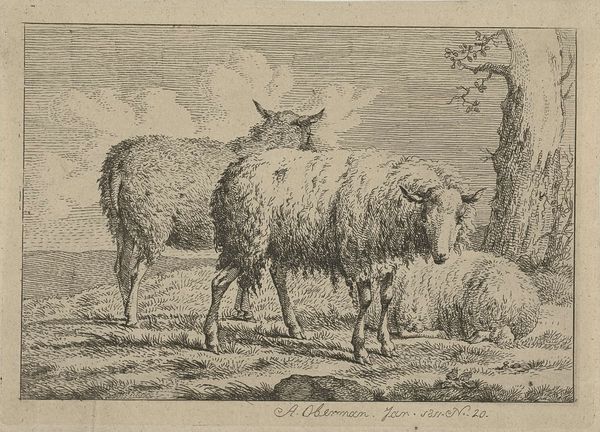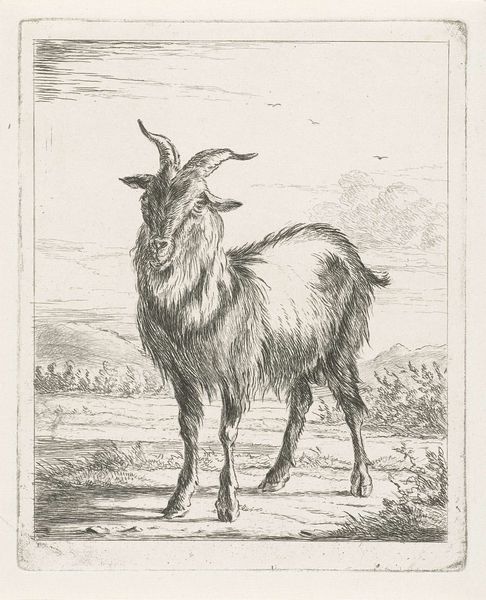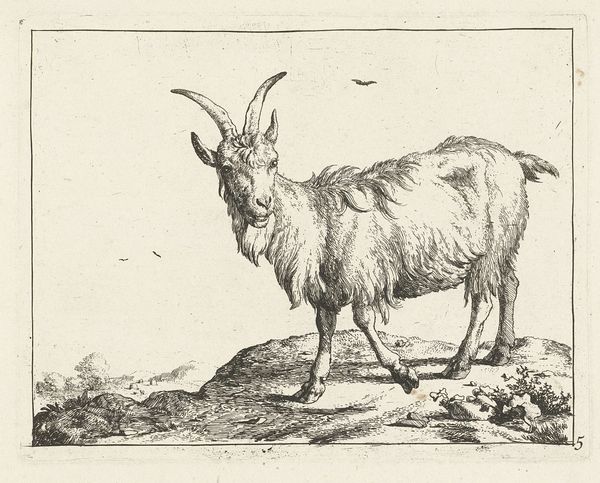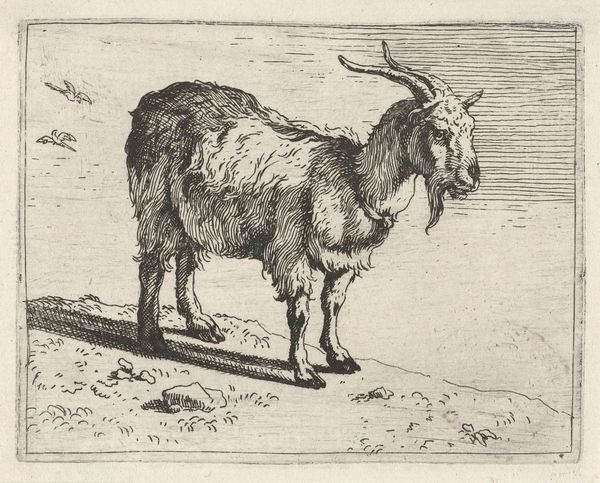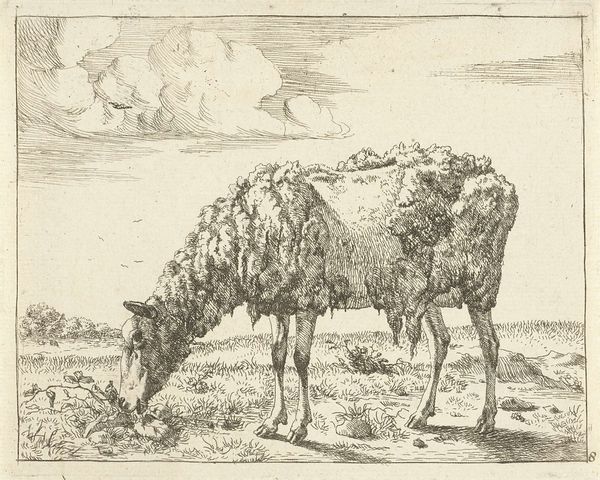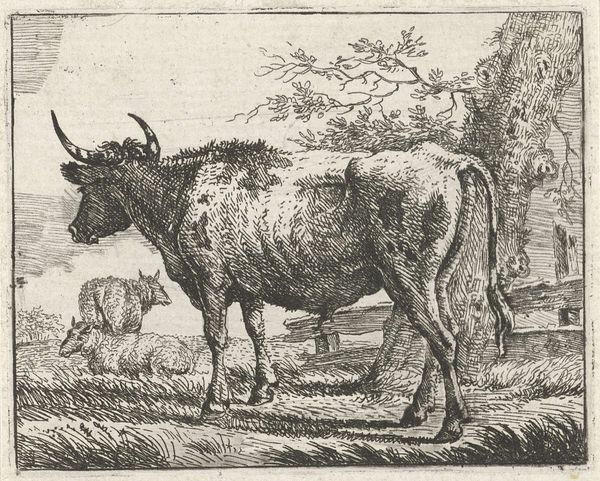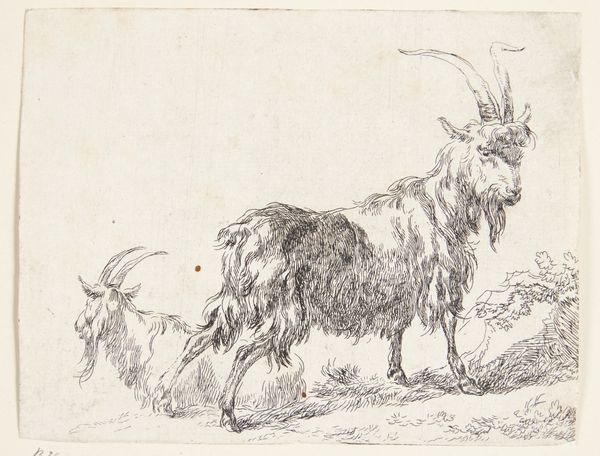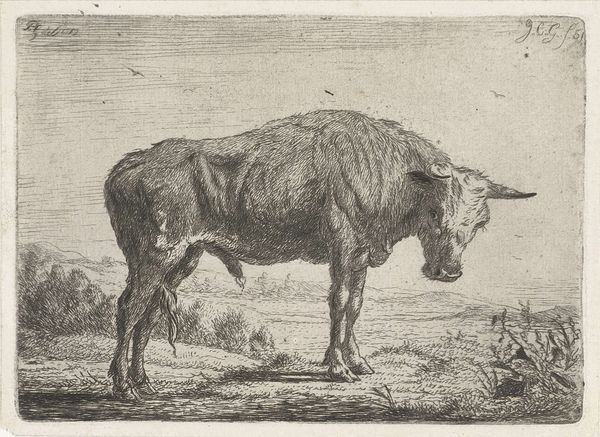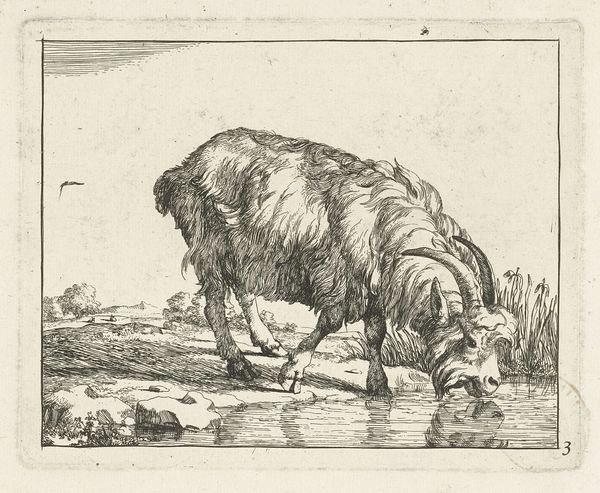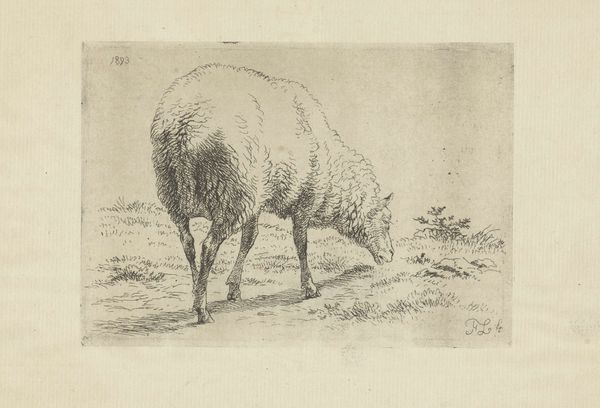
Dimensions: height 147 mm, width 200 mm
Copyright: Rijks Museum: Open Domain
Editor: Here we have P.J. Neumans’ “Standing Goat” from 1841. It’s a wonderfully detailed drawing, almost photographic in its realism. It looks very docile; What do you see in this piece? Curator: Well, putting it in context, animal portraiture experienced a surge in the 19th century. We have to ask ourselves why. With increasing urbanization, images like this served a function, reminding a rapidly changing society of its rural past. Was there also perhaps a subtle idealization of the agrarian lifestyle? Editor: So, the drawing becomes a stand-in for a world that was disappearing? A sort of rural fantasy? Curator: Exactly. And how did societal structures of power contribute to its consumption? Remember, this piece likely found its audience amongst the urban middle class, keen on maintaining certain narratives about the countryside and their connection to it. Were they attempting to retain ownership over it, metaphorically speaking? Editor: That's a provocative reading. It makes you wonder what they truly valued. A quaint image or an authentic connection to the land? Curator: Precisely. Also, consider the role of institutions here. Where would it be exhibited and for whose benefit? Images were controlled back then to show ideal, perfect scenes and this controlled how art and artists gained visibility, wasn't it? Editor: So much more than just a drawing of a goat. I will be definitely viewing animal portraits with a critical view from now! Thank you for the explanation. Curator: My pleasure! The more context you apply, the deeper your analysis becomes.
Comments
No comments
Be the first to comment and join the conversation on the ultimate creative platform.


